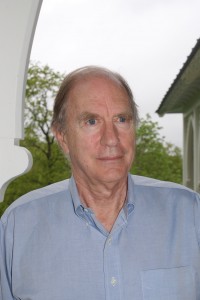EDC Weighs Plan for Fiber Optic Network
Local technologist sees many potential benefits to town
By Kurt Steele
Maxwell is a relatively new resident of Norfolk who has degrees from Stanford University and a reputation as a strategic planner with a broad range of interests. Early in his career, he fathered the modern dial-up modem and shepherded DSL into existence. More recently, he was awarded a doctorate from Stanford in English literature.
His fiber optic network proposal to the EDC would augment or replace existing commercial networks for telephone, television and Internet access, and provide new services that he is confident would give Norfolk a new identity as a place to live and work. “Norfolk could attract younger people in the software or Internet business for twelve-month residencies,” he said. “Some existing part-time residents would be inclined to spend more time here and spend more money in town; and home sales could benefit from the unique speeds available here, but not elsewhere.”
A fiber system’s big advantage is speed. Fiber optic cable transmits 200 times faster than DSL and 50 times faster than cable, with premium fiber speeds 100 times faster still. A movie from Comcast that downloads in seven minutes would take only seven seconds on a fiber network.
“Fiber will come to Norfolk sooner or later,” Maxwell told the commission. “If later, it will come from Comcast or AT&T, and that could take years. If Norfolk moves now, as several other communities have already done around the country, it can promote community growth and offer incremental revenue for the town.”
Once a fiber network was in place, Maxwell could see Norfolk offering other services, such as enhanced home security, remote control of home lighting, video monitoring inside and outside, high quality distance learning, remote back-up of all types of files, and lightning speeds for home offices and home businesses.
Maxwell said that a group in New Marlborough was actively exploring a fiber optic network that would eventually reach all three counties in Western Mass. “If such high-speed services were available in Norfolk before they were available in other rural havens in New England, Norfolk could realize economic growth without compromising its rural character,” he said.
Maxwell sketched a three-phase approach to creating a fiber-optic program. The first would study feasibility and generate community support. The second would engineer a network and seek investors (potentially both public and private), and the third would install the network and market its services. He noted that Yale has also expressed interest in fiber-optic speeds to enhance its music and art programs here.
Given Norfolk’s small scale, Maxwell thinks the project could be completed in three years and become profitable in four. He hopes to organize a preliminary community meeting in June or July to launch the process.
Libby Borden, chair of the EDC, said that as part of its mission to help foster business development in Norfolk, “the commission will help Maxwell wherever feasible.”
Maxwell suggests financing such a system would run to four million dollars. Its profitability would depend on a number of variables, including availability of public and private funds, the number of residents who would become customers and buy more than just basic service and outside competition.
“Fiber is coming to Norfolk, sooner or later,” Maxwell said. “I’m working for sooner, so Norfolk, not Comcast, can benefit. I hope others will see the same picture and join me in the chase.”

